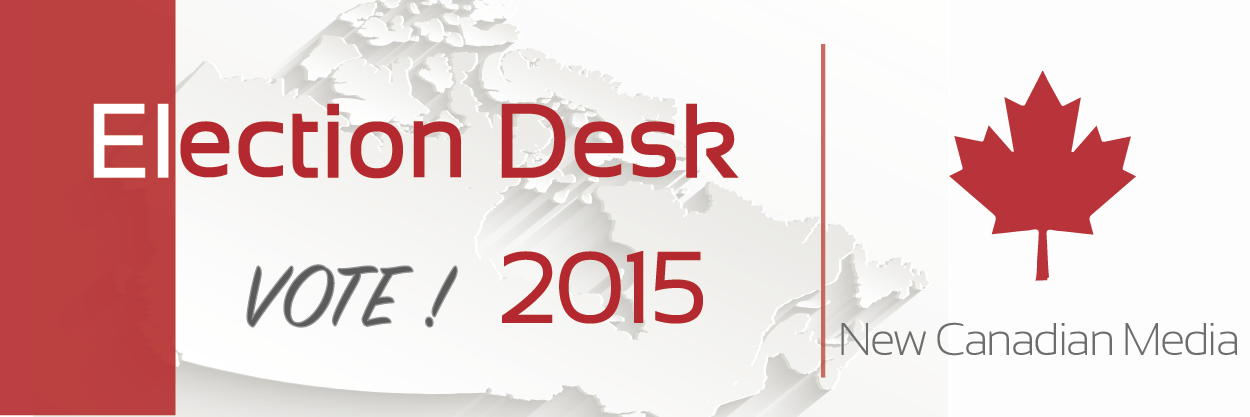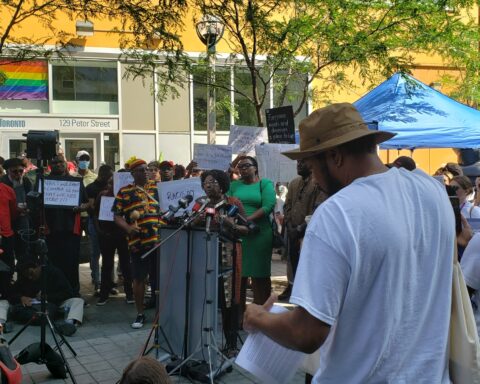While immigrant communities across Canada made a significant impact on the last federal election in 2011, much work still needs to be done to increase the presence of visible minorities in Canadian politics.
This was the consensus formed during a panel discussion called, “Courting the ‘Ethnic Vote’: Immigration and Multiculturalism in the 2015 Federal Election,” which took place September 22 at the University of Toronto’s Munk School of Global Affairs.
Both political experts and media professionals spoke during the panel, discussing factors such as media coverage of minority candidates, how to cater to immigrants and the importance of having visible minorities run for office. Participants emphasized that immigrants are not a monolithic voting block, but need to be courted if parties hope to win this fall.
Support and coverage in the media
According to Chris Cochrane, an associate professor with the University of Toronto’s department of political science, he’s seen a spike in support for the Conservatives amongst immigrants between 2005 to 2011 who have shifted their support from the Liberals and the New Democrats.
“There’s story after story about the remarkable success the Conservatives enjoyed amongst immigrant communities in the last election,” Cochrane said, referring to media reports.
He continued, “The story itself makes perfect sense if you look at the results. Stephen Harper realized that they couldn’t win as a rural party. The soundest footing for the Conservatives would be [to form] an alliance between rural western Canada and suburban Ontario. In order to win that, they would have to make inroads amongst immigrant communities.”
Much work still needs to be done to increase the presence of visible minorities in Canadian politics.
But while there’s no shortage of media coverage for how the Conservatives came out on top during the 2011 federal election, Erin Tolley, an assistant professor in political science at the University of Toronto, noted that the media is problematic in other ways.
While she says news coverage is not racist, Tolley argues that journalists’ news judgment are often racialized when it comes to reporting on visible minority candidates.
“I found that racial minority candidates tend to be portrayed as products of their socio-demographic characteristics with far more attention given to their backgrounds and culture than is the case for white candidates,” she says.
“In addition, I found that racial minority candidates are much less likely to appear in stories about pressing election issues like the economy even when those candidates present themselves as being interested and concerned about those issues.”
In Tolley’s presentation, she gave examples of media coverage on Conservative party member Tim Uppal. The media often paid very close attention to his immigrant background, his Punjabi heritage, his turban and his beard. This she says, “explicitly painted him as different from the norm.”
Another example given by Tolley were reports on Liberal candidate Ruby Dhalla that mention her past as a Bollywood actress. Tolley argues that this type of coverage undermines the skills and qualifications Dhalla brings to the arena as a politician.
“Racial minority candidates tend to be portrayed as products of their socio-demographic characteristics.”
While Tolley says such coverage in the media are intended to be innocuous, she suggests that there is a need for more training for journalists when it comes to reporting on diversity. She notes that the “Canadian Press Stylebook” has a section on sexism, but not on racism. The only section that touches on this is called “Race and Ethnicity.”
“Many of the journalists that I talked to didn’t think this was necessary,” said Tolley. “They talked about how the standard for the coverage is fairness and accuracy and that they really only mention race when it’s relevant to news stories.”
The need to engage immigrant voters
How the media covers visible minorities in Canadian politics wasn’t the only topic covered during the panel. How to attract minority voters was also front and centre during the discussion.
Jane Hilderman is the executive director of Samara, a non-partisan group that aims to connect and reconnect Canadians to politics and democracy through research and discussions.
Noting that the last federal election had a voter turnout of 61 per cent, Hilderman argues that there needs to be better ways to socialize people into politics, especially as many newcomers to Canada may come from places with different political institutions and traditions.
Part of Samara’s approach to improving the way immigrants get involved in politics is through community programs such as Democracy Talks, Hilderman explained, which are facilitated conversations where people can ask about issues and experiences they have with politics.
Through those conversations, Samara has also developed a Vote PopUp kit, which provides community groups with training on how to vote. It aims to demystify the voting process and explain why exercising your right to vote is important.
On getting immigrants politically engaged, New Canadian Media’s Ranjit Bhaskar said it should be a grassroots effort. It would help if political leaders show genuine interest in the well-being of their constituents instead of merely pandering to the “ethnic” among them, Bhaskar said.
“I predict that immigrants will vote much more in this coming election.”
He gave the example of former Toronto Mayor Rob Ford as someone who, although he did not specifically target ethnic voters, still elicited their support by taking up issues that mattered to them. “He was the one mayor who visited the run-down, cockroach-infested apartments of immigrant families to check on their living conditions,” Bhaskar explained.
With reference to the current federal campaign, Bhaskar said issues such as Bill C-51, Bill C-24, family reunification, small business taxes and recognition of foreign credentials are seen as important to immigrant voters.
Global Diversity Exchange’s executive director Ratna Omidvar agreed, stating that these issues will have a major impact on the election results along with the ongoing refugee crisis.
“We have 30 more ridings in the country this coming election. Most of them are in the outer rings of vote-rich, minority-rich Toronto and Vancouver. In many of these new ridings, there are only minorities who are running,” she said.
“I predict that immigrants will vote much more in this coming election than they have in the past because they will have people who are running for power who look like them.”




